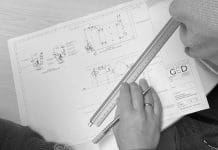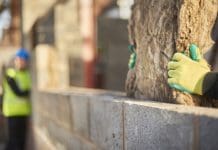The UK Green Building Council has published new guidance aimed at clients that tackles the topic of embodied carbon
A new embodied carbon guidance has been published for clients. The document was launched yesterday at the Ecobuild event, which runs until the 9 March.
The UK Green Building Council (UK-GBC) said it had targeted its guidance at clients as this group are usually the ones instigating a project’s sustainability agenda. It hopes to influence the entire supply chain by increasing awareness of embodied carbon at a client level.
The guidance was produced by UK-GBC members, among which were BRE, Carillion, Derwent London and Walsh. It outlines the basics of embodied carbon and makes recommendations of how to approach an assessment. It covers the following areas:
- The basics of embodied carbon
- An overview of some suggested approaches
- Example clauses to propel embodied carbon requirements down the supply chain
- Practical tips on how to use the outcomes of an assessment.
Decarbonising the built environment
UK-GBC’s Chief Executive Julie Hirigoyen said: “UK-GBC’s vision is of a built environment that is fully decarbonised.
“This has to include both embodied and operational carbon. As operational carbon reduces, the relative significance of embodied carbon increases.
“So we will continue to advocate for embodied carbon to become a mainstream issue in building design, construction and maintenance.
“Indeed, we will be encouraging our client members and other clients in the industry to create their own embodied carbon briefs by making effective use of this guidance.
“Also, through our work with cities and other local and national authorities, we will be encouraging the assessment of embodied carbon within the public sector planning and procurement process.”
Peyrouz Modarres, of Walsh said the guidance would prove helpful. “At Walsh, we feel strongly that, as structural engineers, we have a responsibility to minimise our impact on the built environment.
“As such, since 2013, we have invested in researching and developing our own embodied carbon assessment tool.
“From this research, we have found that on a typical project, through effective lean design, around 20 per cent of the embodied carbon of the structure can be saved.
“With greater client involvement this percentage saving can rise considerably, and Walsh have shown that it is possible to achieve over 60 per cent savings.
“Such significant savings of embodied carbon clearly demonstrate the importance of close client engagement as a vital contribution to reducing embodied carbon.”
Moving towards a zero carbon society
Flavie Lowres, of BRE said it was more important than ever for firms to address embodied carbon while pushing for a zero carbon environment.
“Organisations are coming under increased scrutiny about the environmental impacts of their products and the need for increasing transparency requires a more streamlined way to meet stakeholder expectations and to drive business improvements.
“BRE has a long history of developing activities around embodied carbon and championing a zero carbon society. With the support of organisations such as UK-GBC we can engage clients to take their first steps into embodied carbon measurement.”













